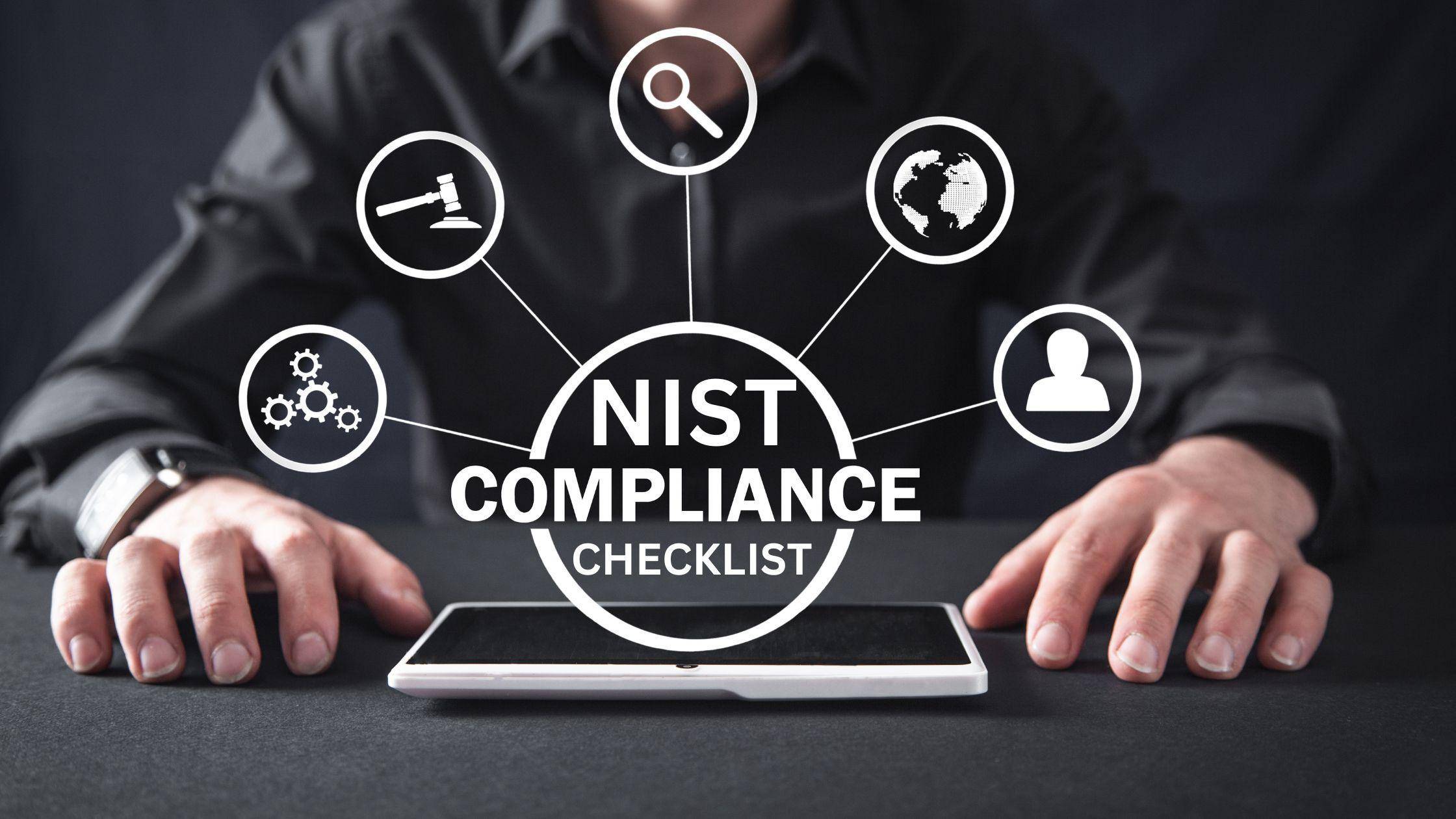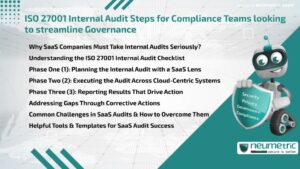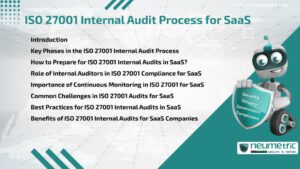Table of Contents
ToggleIntroduction
NIST 800-171 compliance is a vital part of information security, but it can be difficult to understand and even more difficult to implement. Fortunately, this article focusses on the NIST Compliance Checklist and will help you navigate through the NIST 800-171 requirements and best practices so you can adopt them for your Organisation.
What is NIST compliance?
In the context of this article, NIST Compliance refers to complying with the NIST 800-171 standard. The National Institute of Standards and Technology [NIST] is an agency within the Department of Commerce that focuses on making measurements, standards and technology consistent throughout the government. Their Cybersecurity Framework is a process for ensuring you’re doing things right when it comes to securing your IT assets and sensitive data from cyber threats.
While there are other cybersecurity frameworks out there, such as ISO 27001/27002 or COBIT 5®, these are all designed for different purposes than those outlined in NIST 800-171. ISO 27001 has more focus on risk assessment while COBIT 5® focuses more on governance principles rather than technical controls like NIST 800-171 does.
What is the NIST Compliance Checklist?
The NIST compliance checklist is a document that contains a list of requirements and best practices for securing IT systems. It is intended to be used by system owners and information owners to help ensure information security controls are in place, so as to meet federal standards and other regulatory requirements.
It’s important to note that the NIST compliance checklist isn’t mandatory, although it does provide guidance on how Organisations should develop policies, procedures, roles and responsibilities related to cybersecurity (among other things). Let us look at the some of the points covered in the NIST Compliance checklist that will help you achieve NIST 800-171 Compliance:
Identify CUI: The first step to achieving NIST 800-171 compliance is to identify CUI. The term “CUI” stands for “Controlled Unclassified Information.” CUI is a subset of information that’s considered sensitive, but not classified. In other words, it’s information that has been identified as having the potential to cause damage if it were to be compromised.
The NIST 800-171 guidelines provide Organisations with a way to identify and manage CUI in their environments. The process of identifying CUI involves determining what information needs to be protected, the types of threats that could affect the system and the Organisation’s risk tolerance.
Classify Data: Once an Organisation has identified the types of CUI that need to be protected, it can then classify the data. The NIST 800-171 guidelines provide information on how to do this and also outline some best practices for classifying data.
Perform a security assessment: The security assessment is used to determine the level of protection that needs to be implemented. The NIST 800-171 guidelines provide Organisations with a set of questions they can use when performing this assessment. The results are then used to decide whether or not an Organisation should implement additional safeguards for its CUI data.
Develop and test baseline controls: The baseline controls are the primary security measures that will be used to protect CUI data. There are a number of different safeguards that can be implemented, including encryption, intrusion detection systems and firewalls. The NIST 800-171 guidelines also provide Organisations with information on how to develop these controls as well as test them for effectiveness.
Regular risk assessments: The NIST 800-171 guidelines require Organisations to perform regular risk assessments in order to ensure that their CUI data is still protected. This means that they need to regularly test the effectiveness of their baseline controls, as well as any other security measures put in place. The results of these tests can then be used to determine if additional safeguards are needed.
Document security plans: The NIST 800-171 guidelines also require that Organisations develop and document security plans for their CUI data. These plans should include information on how the data is stored, who has access to it, and what measures are being taken to protect it. The guidelines recommend that these documents be reviewed at least once every two years in order to ensure that they’re still relevant and up-to-date with current risks.
Data breach response plan: The NIST 800-171 guidelines recommend that Organisations develop and document a data breach response plan. This plan should include information on how to respond if an incident occurs, including what procedures to follow and who will be responsible for each step. It should also include details on any legal requirements that apply to the Organisation in such situations.
Raising awareness: The NIST 800-171 guidelines recommend that Organisations raise employee awareness about security best practices. This can be done through training sessions and other educational opportunities, such as webinars or podcasts.
The importance and benefits of complying with NIST 800-171
NIST 800-171 is a standard for security controls. It is the first standard of its kind to be published by NIST. This framework can be used to assess and implement security controls within an Organisation’s IT systems, which will help mitigate vulnerabilities and minimise the risk of cyber attacks. The standard will make it easier for Organisations to comply with the NIST Cybersecurity Framework and other related standards. It aims to establish a common language and understanding of security controls, which will make it easier for Organisations to implement them in their IT systems.
NIST 800-171 Requirements
The NIST 800-171 standard is divided into five parts which in total consists of 14 control families that contain specific requirements for different Organisations. The first part covers security control baselines, which are a set of common security controls that every Organisation should implement in their IT systems. The second part describes how to identify and measure the risk within an Organisation’s IT systems. The third part provides guidelines on how to mitigate risks through implementing appropriate security controls.
The fourth and fifth parts provide guidelines on how to perform security assessments and how to document the results of those assessments. The standard also includes a glossary of terms that are used throughout it. The NIST 800-171 standard provides Organisations with clear guidelines on how to implement IT security controls in their systems, which will make it easier for them to comply with the regulation.
NIST 800-171 requires Organisations to protect their systems from tailgating attacks. If a system is left unprotected, it becomes vulnerable to exploitation from an intruder who follows someone through an open door or other entrance. The attacker may then gain access to the system themselves and compromise its security.
Best Practices For NIST 800-171
Using the NIST Compliance Checklist provided above, Organisations can ensure compliance with the NIST 800-171 Regulation. Organisations should implement the following best practices to help them comply with NIST 800-171:
- Create a strong password policy.
- Implement Two-Factor Authentication [2FA] wherever possible.
- Set up user accounts so that they can only be accessed from certain devices.
- Use a firewall.
- Use anti-virus software, anti-malware software, and anti-spam software to protect against cyber threats to your network devices and the data stored on them.
- Implement endpoints (laptops and desktops) with the latest security updates from vendors such as Microsoft and Apple.
- Maintain current operating system patches in accordance with your Organisation’s patch management plan.
- Use only reputable applications from reputable sources.
- Update browsers frequently to ensure they’re protected against web threats such as malware or ransomware.
Conclusion
The NIST Compliance Checklist for 800-171 is a valuable for Organisations to use as they strive for NIST compliance. There are many benefits associated with this standard, including increased security and assurance that your Organisation has been audited correctly by an independent third-party auditor. With so much at stake when it comes to information security and data privacy, you need a way to ensure that your Organisation is following the right procedures and doing everything possible to keep sensitive data safe—and the NIST 800-171 compliance checklist can help!
Neumetric offers NIST Compliance Services that helps you implement the required security comtrols, policies and procedures in your Organisation that will help you become compliant with the regulation.
FAQs
How do I ensure NIST compliance?
NIST 800-171 is a set of standards that are being used to help Organisations protect their data. In order to ensure compliance with NIST 800-171 there are a number of things you need to do:
- Understand the requirements outlined in NIST 800-171 and what they mean for your Organisation.
- Ensure that your Organisation’s security policies and procedures meet NIST 800-171 standards.
- Develop an action plan for implementing changes as needed.
The NIST Compliance Checklist provided in this article will help you understand the expectations of NIST and help you comply with the regulation.
Is NIST a compliance standard?
NIST 800-171 is a set of guidelines, not a compliance standard. A compliance standard is mandatory and non-negotiable; it informs you what you must do in order to be compliant with the law. The NIST 800 series is not a compliance standard, but rather a set of guidelines that help Organisations identify possible threats so they can protect themselves against said threats. This means that although NIST 800-171 is part of the larger NIST cybersecurity framework, it does not itself mandate anything or create laws for Organisations to follow; it simply provides recommendations for securing sensitive data against potential attacks by hackers and other malicious actors.
Who needs NIST compliance?
While the NIST 800 series does not mandate compliance, it is important for Organisations to follow it. In fact, many government agencies and private companies require their contractors and vendors to be in compliance with these guidelines. One example of this is the Department of Defense (DOD), which requires all contractors that work with them to be compliant with NIST 800-171 and other standards as well. The short answer is that anyone who handles sensitive data needs NIST compliance.





